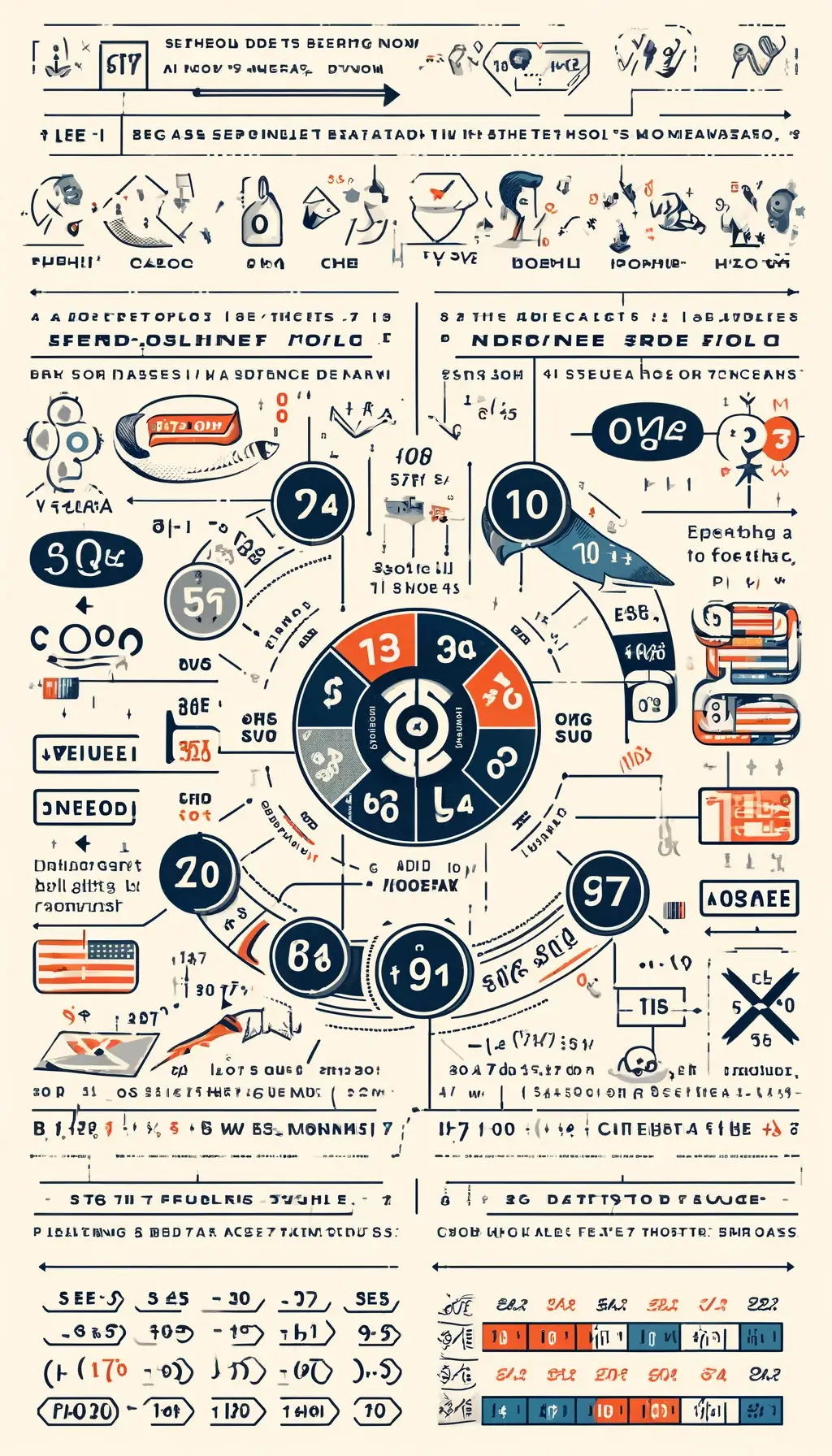Sports betting has emerged as a thrilling pastime and a significant global industry, captivating millions with the promise of big wins and the excitement of strategic gambling. Whether it’s football, basketball, horse racing, or cricket, sports betting spans a diverse array of events, each offering unique opportunities for bettors. Its widespread popularity is evident in the expanding legal markets and the increasing number of online betting platforms, making it more accessible than ever.
For those new to this world, understanding betting lines and spreads is essential. These are not just numbers but critical tools that guide decisions on where and how much to wager. Betting lines set by bookmakers reflect the odds of various outcomes, while spreads are used to level the playing field between unevenly matched teams. Mastering how to read and interpret these figures is crucial for making informed bets that enhance your chances of success.

Section 1: Basics of Sports Betting
Sports betting is the activity of predicting sports results and placing a wager on the outcome. This can be as simple as betting on who will win a game, a tournament, or a match. It involves putting money on your predictions about the result of a sporting event, to win more money based on the odds provided by a bookmaker or betting site.
Common Types of Sports Bets
- Straight Bets: This is the most straightforward type of bet, where you wager on a single game or event. The bet is typically made against a point spread, requiring the chosen team to win by a certain number of points for the bet to pay off.
- Moneyline Bets: Unlike straight bets that use point spreads, moneyline bets involve selecting a team or player to win outright. The potential payout varies depending on the odds, which are set based on each competitor’s perceived strength.
- Totals (Over/Under Bets): Here, you bet on whether the combined score of both teams in a game will be over or under a predetermined amount set by the bookmaker. This doesn’t involve predicting the winner but rather the overall pace and offensive/defensive strength of the teams.
- Parlays: A parlay combines multiple bets into one wager. It offers higher potential payouts but is riskier, as all selected bets must win for the parlay to pay out. Parlays can be made up of different types of bets across several games.
Section 2: Understanding Betting Lines
Betting lines, also known as odds, are set by bookmakers and represent the wagering terms for a given sports event. They are crucial in determining how much you can win on a bet. The lines balance the betting action by adjusting the betting odds to make both outcomes appealing to bettors, which helps manage the financial risk for the bookmaker.
How Lines Are Made
Betting lines are set by sportsbooks and oddsmakers based on various factors:
- Team Performance: Current and historical performance, including win-loss records, previous encounters, and playing conditions.
- Injuries and Absences: Player injuries or suspensions that could impact the outcome of the game.
- Weather Conditions: Particularly in outdoor sports, where conditions can significantly affect gameplay.
- Betting Trends: How the public is betting can also influence line adjustments to ensure the sportsbook remains balanced.
Oddsmakers use advanced algorithms, expert opinions, and comprehensive data analysis to set initial lines. However, these lines can shift based on how bettors are wagering, aiming to ensure equal action on both sides of the line. Understanding how lines are set and what influences them can give bettors an edge in making more informed betting decisions.
Section 3: Decoding Betting Spreads
Betting spreads, commonly referred to as point spreads, are used by bookmakers to level the playing field between two teams of differing strengths. This type of betting does not just focus on who wins or loses, but rather on how much a team wins or loses. It essentially gives a handicap to the favored team, requiring them to win by a certain number of points for bets on them to pay out.
How to Read Spreads
When you see a spread listed as -7/+7, it means the favorite team (notated by a minus) is expected to win by more than 7 points. On the other hand, the underdog (notated by a plus) is expected to lose by less than 7 points or win outright. If you bet on the favorite, they need to win by more than 7 points. If you bet on the underdog, they need to win the game or lose by less than 7 points for your bet to win.
Impact of the Spread on Betting
The spread can significantly affect betting decisions by providing more attractive odds for games with a clear favorite. It also makes betting more appealing on matchups that might otherwise seem uneven, ensuring a more balanced volume of bets. Bettors need to consider team performance, conditions, and matchups more closely when betting against the spread, as these factors can influence the final score relative to the set spread.
Section 4: Betting Odds Explained
Betting odds represent the likelihood of a particular outcome and determine how much a bettor will win if their bet is successful. Essentially, odds are the ratio of the amount (profit) won to the stake, and they indicate the probability of an event occurring.
Types of Odds Formats
- American Odds: Represented as numbers prefixed with a plus or minus. A minus before the number indicates how much you need to bet to win $100 (e.g., -150 means you bet $150 to win $100). A plus indicates how much you’d win if you bet $100 (e.g., +130 means you win $130 on a $100 bet).
- Decimal Odds: More common in Europe, Australia, and Canada, these are easier to understand. The number (e.g., 2.50) represents the total payout instead of profit, meaning you’d get $2.50 for every $1 wagered if you win.
- Fractional Odds: These are typically used in the UK and Ireland, represented by a fraction (e.g., 3/1). It means you win $3 for every $1 bet, plus your initial $1 stake.
Calculating Payouts
Calculating your potential payout is straightforward:
- American Odds: For negative odds, divide 100 by the odds (without the minus sign) and multiply by your stake. For positive odds, divide the odds by 100 and multiply by your stake.
- Decimal Odds: Multiply your stake by the decimal number.
- Fractional Odds: Multiply your stake by the fraction and add your stake to the result.
Understanding these formats and how to calculate payouts allows bettors to compare odds and potential winnings across different sportsbooks effectively, aiding in smarter betting decisions.
Section 5: Practical Tips for Using Lines and Spreads
To maximize potential returns and minimize risks, it’s crucial to shop around for the best lines before placing a bet. Different sportsbooks often offer slightly different lines and odds based on their analyses and the betting patterns of their customers.
Here are a few tips:
- Multiple Accounts: Consider maintaining accounts at several sportsbooks. This enables quick comparison and allows you to take advantage of the best lines available for a particular event.
- Timing: Keep an eye on how lines move as the game day approaches and place your bet when the odds are most favorable.
- Online Resources: Use online betting comparison tools and websites that display live odds from various sportsbooks to find the best current deals.
Strategies for Spread Betting
Spread betting requires a different strategy than simple win/lose bets:
- Research: Comprehensive knowledge of the teams, players, and historical performance against the spread can guide better decisions.
- Home Advantage: Consider the impact of home-field advantage, as teams playing at home often perform better.
- Injuries and Conditions: Always check the latest news for any late changes such as injuries or weather conditions that could impact the spread.
Risks and Rewards
Betting lines and spreads offer the chance to make significant profits but come with higher risks:
- Volatility: Spread betting can be more volatile and unpredictable than traditional betting, as you’re betting on the margin of victory.
- Potential Losses: It’s important to manage your bankroll effectively and be aware that losses can exceed your initial stake if not careful.
Section 6: Advanced Concepts
Line movements occur when betting lines (odds) are adjusted by bookmakers in response to various factors, including:
- Betting Volume: Significant amounts of money wagered on one side can prompt a change in the line to balance the action.
- News Developments: Injury reports, weather conditions, or other news can affect the line as bookmakers react to changes in team dynamics.
- Market Trends: Professional bettors often influence line movements, as sportsbooks adjust their bets to minimize risk.
Understanding how and why lines move can help you predict future line changes and time your bets accordingly for the best value.
Understanding ‘Juice’ or ‘Vig’
‘Juice’ or ‘vig’ (short for vigorish) is the fee that sportsbooks charge on bets. It’s typically built into the odds:
- How It’s Calculated: For example, in an even game, instead of offering even odds, a bookmaker might offer -110 on both sides, meaning you need to bet $110 to win $100.
- Impact on Bettors: Understanding the vig can help you understand how much you need to win just to break even and can guide you to seek out the best odds with the lowest vig.
- By mastering these advanced concepts, bettors can enhance their strategic approach to sports betting, ultimately leading to more informed and potentially profitable betting decisions.








